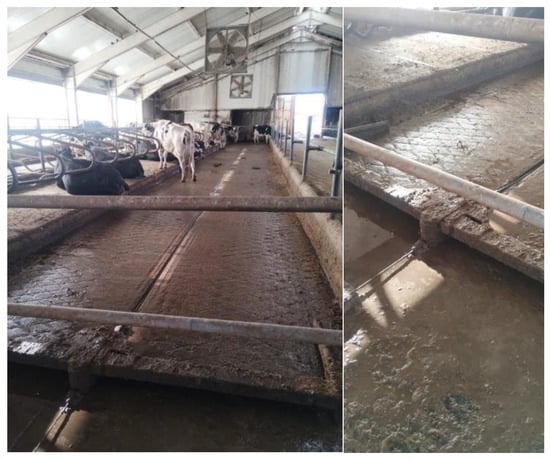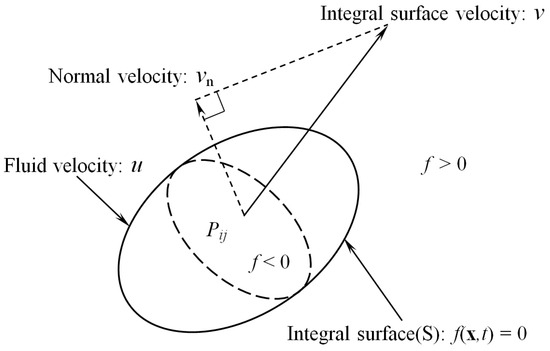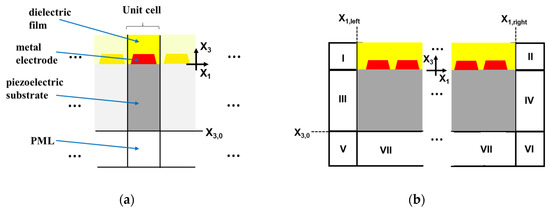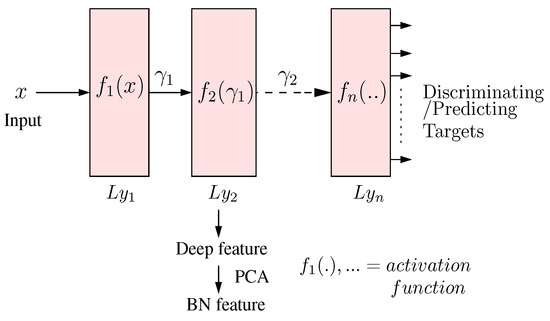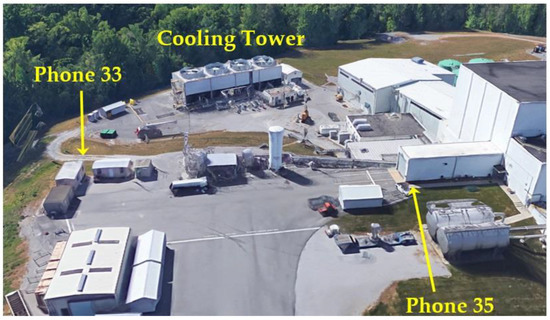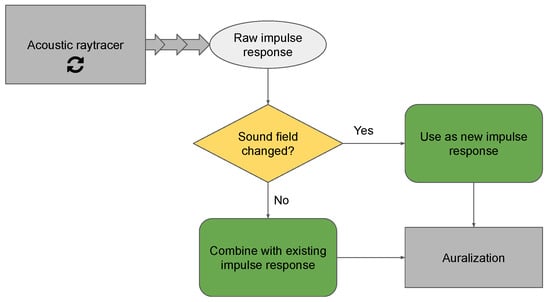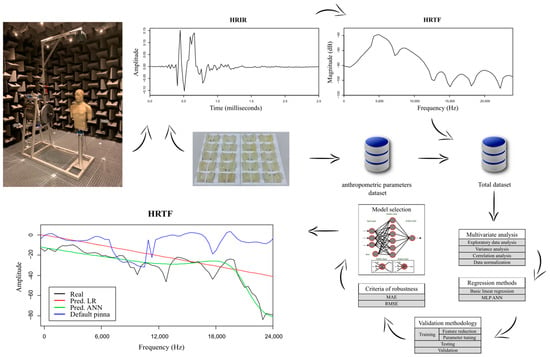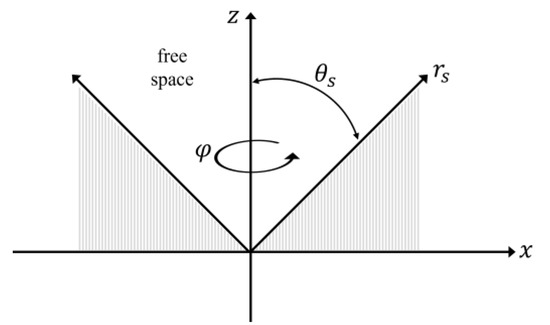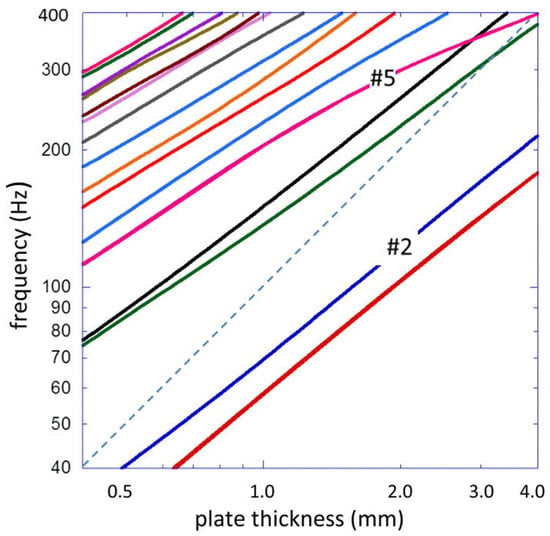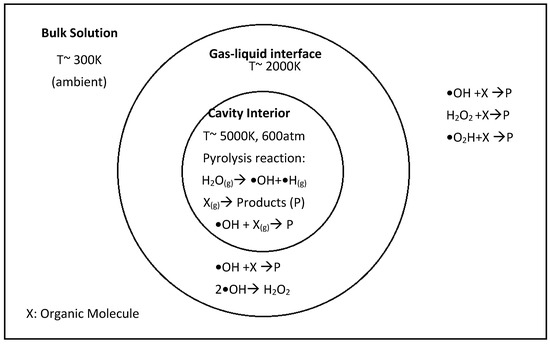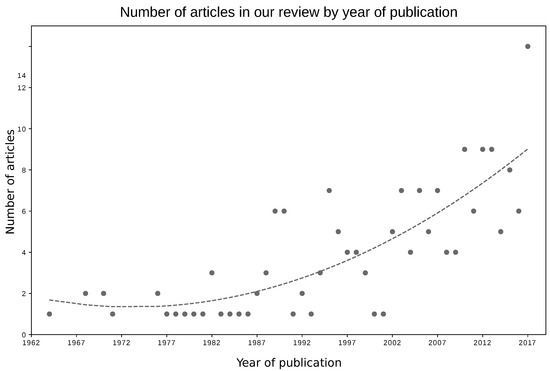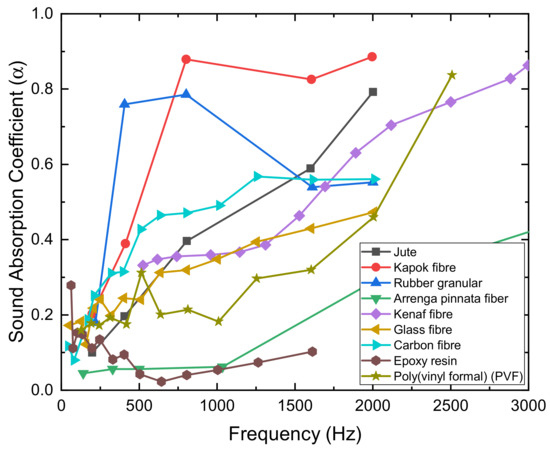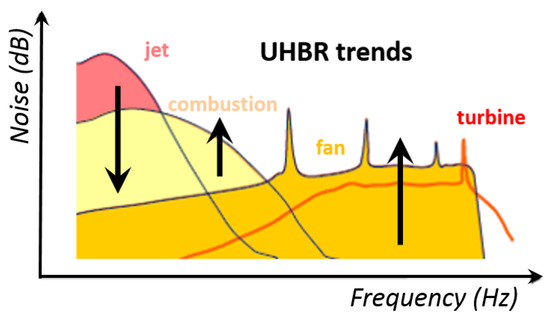Featured Position and Review Papers in Acoustics Science
A topical collection in Acoustics (ISSN 2624-599X).
Viewed by 116079
Share This Topical Collection
Editor
 Prof. Dr. Jian Kang
Prof. Dr. Jian Kang
 Prof. Dr. Jian Kang
Prof. Dr. Jian Kang
E-Mail
Website
Collection Editor
UCL Institute for Environmental Design and Engineering, Bartlett School of Environment, Energy and Resources, University College London, London WC1H 0NN, UK
Interests: environmental acoustics; building acoustics; soundscape; noise control
Special Issues, Collections and Topics in MDPI journals
Topical Collection Information
Dear Colleagues,
In the past year, Acoustics followed a strategy aimed at highlighting important topics of acoustics science with dedicated collections and reviews. As it turned out, these selected state-of-the-art topics filled more than just one collection and were worthy of more than one review; thus, we decided to set up this Topical Collection to keep an ongoing, stimulating discussion of hot topics. In this Topical Collection, we will publish contributed and invited reviews and position papers with a clear focus on a certain hot topic, providing our readers with new and stimulating insights relating to recent developments in a range of fields/topics in acoustics.
We look forward to receiving your contributions.
Prof. Dr. Jian Kang
Collection Editor
Manuscript Submission Information
Manuscripts should be submitted online at www.mdpi.com by registering and logging in to this website. Once you are registered, click here to go to the submission form. Manuscripts can be submitted until the deadline. All submissions that pass pre-check are peer-reviewed. Accepted papers will be published continuously in the journal (as soon as accepted) and will be listed together on the collection website. Research articles, review articles as well as short communications are invited. For planned papers, a title and short abstract (about 100 words) can be sent to the Editorial Office for announcement on this website.
Submitted manuscripts should not have been published previously, nor be under consideration for publication elsewhere (except conference proceedings papers). All manuscripts are thoroughly refereed through a single-blind peer-review process. A guide for authors and other relevant information for submission of manuscripts is available on the Instructions for Authors page. Acoustics is an international peer-reviewed open access quarterly journal published by MDPI.
Please visit the Instructions for Authors page before submitting a manuscript.
The Article Processing Charge (APC) for publication in this open access journal is 1600 CHF (Swiss Francs).
Submitted papers should be well formatted and use good English. Authors may use MDPI's
English editing service prior to publication or during author revisions.
Published Papers (17 papers)
Open AccessReview
Importance of Noise Hygiene in Dairy Cattle Farming—A Review
by
Dimo Dimov, Toncho Penev and Ivaylo Marinov
Cited by 5 | Viewed by 6878
Abstract
Noise is defined as unwanted sound, whether chronic or periodic, and can be described in a variety of terms, including its frequency, intensity, frequency spectrum, and sound pressure shape over time. The sources of noise can be technical devices, various hydraulic systems, the
[...] Read more.
Noise is defined as unwanted sound, whether chronic or periodic, and can be described in a variety of terms, including its frequency, intensity, frequency spectrum, and sound pressure shape over time. The sources of noise can be technical devices, various hydraulic systems, the engines of various machines, routine work (opening and closing doors, repairing stalls, talking of workers, feeding), mechanical ventilators, animal activities, including climbing barriers, chewing barriers, vocalizations of cows. Good farms in terms of noise level are considered to be those with a noise level up to 70 dB, while farms with a noise level above 70 dB are problematic. Noise levels above 70 dB also have a detrimental effect on cow welfare, and this is associated with a high number of somatic cells in milk. When milking dairy cows, the noise level should not exceed 65–70 dB, or if it exceeds this value, it should be for a short time, as this can lead to health disorders in humans and animals in the medium term.
Full article
►▼
Show Figures
Open AccessArticle
Fast Evaluations of Integrals in the Ffowcs Williams–Hawkings Formulation in Aeroacoustics via the Fast Multipole Method
by
Yadong Zhang and Yijun Liu
Cited by 1 | Viewed by 2754
Abstract
A new approach to accelerating the evaluation of monopole and dipole source integrals via the fast multipole method (FMM) in the time domain for general three-dimensional (3-D) aeroacoustic problems is presented in this paper. In this approach, the aeroacoustic field is predicted via
[...] Read more.
A new approach to accelerating the evaluation of monopole and dipole source integrals via the fast multipole method (FMM) in the time domain for general three-dimensional (3-D) aeroacoustic problems is presented in this paper. In this approach, the aeroacoustic field is predicted via a hybrid method that uses computational fluid dynamics (CFD) for near-field flow field calculations and the Ffowcs Williams–Hawkings (FW-H) acoustic analogy for far-field sound field predictions. The evaluation of the surface integrals of the monopole and dipole source terms appearing in the FW-H formulation is accelerated by a 3-D FMM to reduce computational cost. The proposed method is referred to as Fast FW-H in this work. The performance and efficiency of the proposed methodology are demonstrated using several examples. First, aeroacoustic predictions for the cases of a stationary acoustic monopole, moving acoustic monopole and stationary acoustic dipole in a uniform flow are studied, generally showing good agreement with the analytical solutions. Second, the sound field radiating from a flow passing a finite-length circular cylinder and the propeller of an unmanned aerial vehicle (UAV) during forward flight are studied, and the computed results obtained via the FW-H and Fast FW-H methods in the time domain with a stationary, permeable surface are compared. The overall computational efficiency of the sound field solutions obtained via the Fast FW-H method is found to be approximately two times faster than the computational efficiency of the original FW-H method, indicating that this proposed approach can be an accurate and efficient computational tool for modelling far-field aeroacoustic problems.
Full article
►▼
Show Figures
Open AccessReview
FEM Modeling of Electro-Acoustic Nonlinearities in Surface Acoustic Wave Devices: A Methodological Review
by
Andreas P. Mayer, Elena A. Mayer, Markus Mayer, Werner Ruile, Vikrant Chauhan, Thomas Forster and Karl C. Wagner
Cited by 3 | Viewed by 2948
Abstract
In the framework of electro-elasticity theory and the finite element method (FEM), a model is set up for the computation of quantities in surface acoustic wave (SAW) devices accounting for nonlinear effects. These include second-order and third-order intermodulations, second and third harmonic generation
[...] Read more.
In the framework of electro-elasticity theory and the finite element method (FEM), a model is set up for the computation of quantities in surface acoustic wave (SAW) devices accounting for nonlinear effects. These include second-order and third-order intermodulations, second and third harmonic generation and the influence of electro-acoustic nonlinearity on the frequency characteristics of SAW resonators. The model is based on perturbation theory, and requires input material constants, e.g., the elastic moduli up to fourth order for all materials involved. The model is two-dimensional, corresponding to an infinite aperture, but all three Cartesian components of the displacement and electrical fields are accounted for. The first version of the model pertains to an infinite periodic arrangement of electrodes. It is subsequently generalized to systems with a finite number of electrodes. For the latter version, a recursive algorithm is presented which is related to the cascading scheme of Plessky and Koskela and strongly reduces computation time and memory requirements. The model is applied to TC-SAW systems with copper electrodes buried in an oxide film on a LiNbO
3 substrate. Results of computations are presented for the electrical current due to third-order intermodulations and the displacement field associated with the second harmonic and second-order intermodulations, generated by monochromatic input tones. The scope of this review is limited to methodological aspects with the goal to enable calculations of nonlinear quantities in SAW devices on inexpensive and easily accessible computing platforms.
Full article
►▼
Show Figures
Open AccessArticle
On Training Targets and Activation Functions for Deep Representation Learning in Text-Dependent Speaker Verification
by
Achintya Kumar Sarkar and Zheng-Hua Tan
Cited by 2 | Viewed by 2671
Abstract
Deep representation learning has gained significant momentum in advancing text-dependent speaker verification (TD-SV) systems. When designing deep neural networks (DNN) for extracting bottleneck (BN) features, the key considerations include training targets, activation functions, and loss functions. In this paper, we systematically study the
[...] Read more.
Deep representation learning has gained significant momentum in advancing text-dependent speaker verification (TD-SV) systems. When designing deep neural networks (DNN) for extracting bottleneck (BN) features, the key considerations include training targets, activation functions, and loss functions. In this paper, we systematically study the impact of these choices on the performance of TD-SV. For training targets, we consider speaker identity, time-contrastive learning (TCL), and auto-regressive prediction coding, with the first being supervised and the last two being self-supervised. Furthermore, we study a range of loss functions when speaker identity is used as the training target. With regard to activation functions, we study the widely used sigmoid function, rectified linear unit (ReLU), and Gaussian error linear unit (GELU). We experimentally show that GELU is able to reduce the error rates of TD-SV significantly compared to sigmoid, irrespective of the training target. Among the three training targets, TCL performs the best. Among the various loss functions, cross-entropy, joint-softmax, and focal loss functions outperform the others. Finally, the score-level fusion of different systems is also able to reduce the error rates. To evaluate the representation learning methods, experiments are conducted on the RedDots 2016 challenge database consisting of short utterances for TD-SV systems based on classic Gaussian mixture model-universal background model (GMM-UBM) and i-vector methods.
Full article
►▼
Show Figures
Open AccessArticle
An Assessment of Persistent Acoustic Monitoring of a Nuclear Reactor during Full Power Generation
by
Edna S. Cárdenas, Samuel K. Takazawa, Milton A. Garcés, David L. Chichester, Riley D. Hunley and Chris D. Young
Cited by 2 | Viewed by 2871
Abstract
Persistent low-frequency (<180 Hz) acoustic detection took place within the boundaries of Oak Ridge National Laboratory to monitor full power operations of the High Flux Isotope Reactor. Three acoustic sensors were installed at distances of 69, 101, and 914 m from the northeast
[...] Read more.
Persistent low-frequency (<180 Hz) acoustic detection took place within the boundaries of Oak Ridge National Laboratory to monitor full power operations of the High Flux Isotope Reactor. Three acoustic sensors were installed at distances of 69, 101, and 914 m from the northeast corner of the cooling towers to monitor and assess four reactor power generation cycles. Features were extracted from power spectral density calculations where data were collected during reactor on and off operations. Diverse spectral features were present during full reactor power, including a 21.4 Hz fundamental frequency and ascending harmonics. Using bandpass filters, these related frequencies were isolated and summed, and the root mean square energy was calculated. The method of isolating and summing characteristic features provided a significant improvement in identifying acoustic behavior related to reactor power when the raw signals were obscured by noise.
Full article
►▼
Show Figures
Open AccessArticle
An Iterative Ray Tracing Algorithm to Increase Simulation Speed While Maintaining Overall Precision
by
Hanna Autio, Nikolaos-Georgios Vardaxis and Delphine Bard Hagberg
Cited by 3 | Viewed by 4854
Abstract
Ray tracing is a frequently used method for acoustic simulations, valued for its calculation speed and ease of use. Although it is fast, there are no fully ray tracing-based real-time simulation methods or engines. Under real-time restrictions, ray tracing simulations lose precision and
[...] Read more.
Ray tracing is a frequently used method for acoustic simulations, valued for its calculation speed and ease of use. Although it is fast, there are no fully ray tracing-based real-time simulation methods or engines. Under real-time restrictions, ray tracing simulations lose precision and the variance inherent in the random simulation method has too much impact on the outcome. In this paper, an algorithm called iterative ray tracing is presented that reduces the negative effects of real-time restrictions by iteratively improving the initial calculation and increasing the precision over time. In addition, new estimates of the expected value and variance of ray tracing simulations are presented and used to show the iteration steps in the new algorithm reduce variance, while maintaining the expected value. Simulations using iterative ray tracing are compared to measurements and simulations using the classical ray tracing method, and it is shown that iterative ray tracing can be used to improve precision over time. Although more testing is needed, iterative ray tracing can be used to extend most ray tracing algorithms, in order to decrease the adverse effects of real-time restrictions.
Full article
►▼
Show Figures
Open AccessArticle
Prediction of Head Related Transfer Functions Using Machine Learning Approaches
by
Roberto Fernandez Martinez, Pello Jimbert, Eric Michael Sumner, Morris Riedel and Runar Unnthorsson
Cited by 2 | Viewed by 4132
Abstract
The generation of a virtual, personal, auditory space to obtain a high-quality sound experience when using headphones is of great significance. Normally this experience is improved using personalized head-related transfer functions (HRTFs) that depend on a large degree of personal anthropometric information on
[...] Read more.
The generation of a virtual, personal, auditory space to obtain a high-quality sound experience when using headphones is of great significance. Normally this experience is improved using personalized head-related transfer functions (HRTFs) that depend on a large degree of personal anthropometric information on pinnae. Most of the studies focus their personal auditory optimization analysis on the study of amplitude versus frequency on HRTFs, mainly in the search for significant elevation cues of frequency maps. Therefore, knowing the HRTFs of each individual is of considerable help to improve sound quality. The following work proposes a methodology to model HRTFs according to the individual structure of pinnae using multilayer perceptron and linear regression techniques. It is proposed to generate several models that allow knowing HRTFs amplitude for each frequency based on the personal anthropometric data on pinnae, the azimuth angle, and the elevation of the sound source, thus predicting frequency magnitudes. Experiments show that the prediction of new personal HRTF generates low errors, thus this model can be applied to new heads with different pinnae characteristics with high confidence. Improving the results obtained with the standard KEMAR pinna, usually used in cases where there is a lack of information.
Full article
►▼
Show Figures
Open AccessArticle
The Guided Ultrasonic Wave Oscillation Phase Relation between the Surfaces of Plate-like Structures of Different Material Settings
by
Liv Rittmeier, Natalie Rauter, Andrey Mikhaylenko, Rolf Lammering and Michael Sinapius
Cited by 3 | Viewed by 2683
Abstract
Lamb waves occur in thin-walled structures in two wave modes—the symmetric and the antisymmetric mode. Their oscillation on the structures‘ surfaces is either in phase (symmetric) or shifted by a phase angle of
(antisymmetric). In this work, a method is developed by
[...] Read more.
Lamb waves occur in thin-walled structures in two wave modes—the symmetric and the antisymmetric mode. Their oscillation on the structures‘ surfaces is either in phase (symmetric) or shifted by a phase angle of
(antisymmetric). In this work, a method is developed by which to compare the surfaces’ oscillation phase relation to answer the question of whether fiber metal laminates show the same surface oscillation behavior as described for metals. The evaluation of time signals regarding the instantaneous phase angle is performed by using the continuous wavelet transformation and the short-time Fourier transformation. Numerical simulations utilizing the finite element method provide time signals from the top and bottom surface of different thin-walled structures of different material settings and configurations. The numerically obtained time signals are evaluated by the developed methods with respect to the oscillation phase. Subsequently, the oscillation phase is evaluated experimentally for the wave propagation in a fiber metal laminate. It is shown that the method based on the continuous wavelet transformation is suitable for the evaluation of oscillation phase relations in time signals. Additionally, it is proven that fiber metal laminates show only two phase relations, which indicates the occurrence of Lamb waves.
Full article
►▼
Show Figures
Open AccessArticle
The Spherical Harmonic Family of Beampatterns
by
Kevin J. Parker and Miguel A. Alonso
Cited by 1 | Viewed by 2665
Abstract
The free space solution to the wave equation in spherical coordinates is well known as a separable product of functions. Re-examination of these functions, particularly the sums of spherical Bessel and harmonic functions, reveals behaviors which can produce a range of useful beampatterns
[...] Read more.
The free space solution to the wave equation in spherical coordinates is well known as a separable product of functions. Re-examination of these functions, particularly the sums of spherical Bessel and harmonic functions, reveals behaviors which can produce a range of useful beampatterns from radially symmetric sources. These functions can be modified by several key parameters which can be adjusted to produce a wide-ranging family of beampatterns, from the axicon Bessel beam to a variety of unique axial and lateral forms. We demonstrate that several special properties of the simple sum over integer orders of spherical Bessel functions, and then the sum of their product with spherical harmonic functions specifying the free space solution, lead to a family of useful beampatterns and a unique framework for designing them. Examples from a simulation of a pure tone 5 MHz ultrasound configuration demonstrate strong central axis concentration, and the ability to modulate or localize the axial intensity with simple adjustment of the integer orders and other key parameters related to the weights and arguments of the spherical Bessel functions.
Full article
►▼
Show Figures
Open AccessArticle
Compensation of Modeling Errors for the Aeroacoustic Inverse Problem with Tools from Deep Learning
by
Hans-Georg Raumer, Daniel Ernst and Carsten Spehr
Cited by 2 | Viewed by 2574
Abstract
In the field of aeroacoustic source imaging, one seeks to reconstruct acoustic source powers from microphone array measurements. For most setups, one cannot expect a perfect reconstruction. The main effects that contribute to this reconstruction error are data noise and modeling errors. While
[...] Read more.
In the field of aeroacoustic source imaging, one seeks to reconstruct acoustic source powers from microphone array measurements. For most setups, one cannot expect a perfect reconstruction. The main effects that contribute to this reconstruction error are data noise and modeling errors. While the data noise is accounted for in most advanced reconstruction methods, e.g., by a proper regularization strategy, the modeling error is usually neglected. This article proposes an approach that extends regularized inverse methods with a mechanism that takes the modeling error into account. The presented algorithmic framework utilizes the representation of the Fast Iterative Shrinkage Thresholding Algorithm (FISTA) algorithm by a neural network and uses standard gradient schemes from the field of deep learning. It is directly applicable to a single measurement, i.e., a prior training phase on previously generated data is not required. The capabilities of the method are illustrated by several numerical examples.
Full article
►▼
Show Figures
Open AccessReview
A Review of Finite Element Studies in String Musical Instruments
by
Evaggelos Kaselouris, Makis Bakarezos, Michael Tatarakis, Nektarios A. Papadogiannis and Vasilis Dimitriou
Cited by 26 | Viewed by 9329
Abstract
String instruments are complex mechanical vibrating systems, in terms of both structure and fluid–structure interaction. Here, a review study of the modeling and simulation of stringed musical instruments via the finite element method (FEM) is presented. The paper is focused on the methods
[...] Read more.
String instruments are complex mechanical vibrating systems, in terms of both structure and fluid–structure interaction. Here, a review study of the modeling and simulation of stringed musical instruments via the finite element method (FEM) is presented. The paper is focused on the methods capable of simulating (I) the soundboard behavior in bowed, plucked and hammered string musical instruments; (II) the assembled musical instrument box behavior in bowed and plucked instruments; (III) the fluid–structure interaction of assembled musical instruments; and (IV) the interaction of a musical instrument’s resonance box with the surrounding air. Due to the complexity and the high computational demands, a numerical model including all the parts and the full geometry of the instrument resonance box, the fluid–structure interaction and the interaction with the surrounding air has not yet been simulated.
Full article
►▼
Show Figures
Open AccessReview
Ecological Validity of Immersive Virtual Reality (IVR) Techniques for the Perception of Urban Sound Environments
by
Chunyang Xu, Tin Oberman, Francesco Aletta, Huan Tong and Jian Kang
Cited by 29 | Viewed by 6947
Abstract
Immersive Virtual Reality (IVR) is a simulated technology used to deliver multisensory information to people under different environmental conditions. When IVR is generally applied in urban planning and soundscape research, it reveals attractive possibilities for the assessment of urban sound environments with higher
[...] Read more.
Immersive Virtual Reality (IVR) is a simulated technology used to deliver multisensory information to people under different environmental conditions. When IVR is generally applied in urban planning and soundscape research, it reveals attractive possibilities for the assessment of urban sound environments with higher immersion for human participation. In virtual sound environments, various topics and measures are designed to collect subjective responses from participants under simulated laboratory conditions. Soundscape or noise assessment studies during virtual experiences adopt an evaluation approach similar to in situ methods. This paper aims to review the approaches that are utilized to assess the ecological validity of IVR for the perception of urban sound environments and the necessary technologies during audio–visual reproduction to establish a dynamic IVR experience that ensures ecological validity. The review shows that, through the use of laboratory tests including subjective response surveys, cognitive performance tests and physiological responses, the ecological validity of IVR can be assessed for the perception of urban sound environments. The reproduction system with head-tracking functions synchronizing spatial audio and visual stimuli (e.g., head-mounted displays (HMDs) with first-order Ambisonics (FOA)-tracked binaural playback) represents the prevailing trend to achieve high ecological validity. These studies potentially contribute to the outcomes of a normalized evaluation framework for subjective soundscape and noise assessments in virtual environments.
Full article
Open AccessReview
A Review on Sonochemistry and Its Environmental Applications
by
Başak Savun-Hekimoğlu
Cited by 109 | Viewed by 9984
Abstract
Sonochemistry is a significant contributor to green science as it includes: (i) the use of less toxic compounds and environmentally safe solvents, (ii) improvement of reaction conditions and selectivity, (iii) no toxic sludge generation, (iv) reduction in the energy use for chemical transformations,
[...] Read more.
Sonochemistry is a significant contributor to green science as it includes: (i) the use of less toxic compounds and environmentally safe solvents, (ii) improvement of reaction conditions and selectivity, (iii) no toxic sludge generation, (iv) reduction in the energy use for chemical transformations, (v) reusability of materials. In water and wastewater treatment, ultrasound is used as an advanced oxidation process to eliminate refractory pollutants. Ultrasound is also used as a very effective sludge pretreatment technology in wastewater treatment plants to facilitate biogas production. Moreover, sonochemical synthesis of nanoparticles has recently attracted great attention as a greener protocol. This paper presents the main applications of ultrasound in environmental remediation and protection. The study also introduces mechanism for the degradation of pollutants from water via sonication in aqueous media and the principle factors affecting the cavitational effect.
Full article
►▼
Show Figures
Open AccessReview
Are Cry Studies Replicable? An Analysis of Participants, Procedures, and Methods Adopted and Reported in Studies of Infant Cries
by
Giulio Gabrieli, Giulia Scapin, Marc H. Bornstein and Gianluca Esposito
Cited by 12 | Viewed by 7181
Abstract
Infant cry is evolutionarily, psychologically, and clinically significant. Over the last half century, several researchers and clinicians have investigated acoustical properties of infant cry for medical purposes. However, this literature suffers a lack of standardization in conducting and reporting cry-based studies. In this
[...] Read more.
Infant cry is evolutionarily, psychologically, and clinically significant. Over the last half century, several researchers and clinicians have investigated acoustical properties of infant cry for medical purposes. However, this literature suffers a lack of standardization in conducting and reporting cry-based studies. In this work, methodologies and procedures employed to analyze infant cry are reviewed and best practices for reporting studies are provided. First, available literatures on vocal and audio acoustic analysis are examined to identify critical aspects of participant information, data collection, methods, and data analysis. Then, 180 peer-reviewed research articles have been assessed to certify the presence of critical information. Results show a general lack of critical description. Researchers in the field of infant cry need to develop a consensual standard set of criteria to report experimental studies to ensure the validity of their methods and results.
Full article
►▼
Show Figures
Open AccessReview
The Present and Future Role of Acoustic Metamaterials for Architectural and Urban Noise Mitigations
by
Sanjay Kumar and Heow Pueh Lee
Cited by 80 | Viewed by 17546
Abstract
Owing to a steep rise in urban population, there has been a continuous growth in construction of buildings, public or private transport like cars, motorbikes, trains, and planes at a global level. Hence, urban noise has become a major issue affecting the health
[...] Read more.
Owing to a steep rise in urban population, there has been a continuous growth in construction of buildings, public or private transport like cars, motorbikes, trains, and planes at a global level. Hence, urban noise has become a major issue affecting the health and quality of human life. In the current environmental scenario, architectural acoustics has been directed towards controlling and manipulating sound waves at a desired level. Structural engineers and designers are moving towards green technologies, which may help improve the overall comfort level of residents. A variety of conventional sound absorbing materials are being used to reduce noise, but attenuation of low-frequency noise still remains a challenge. Recently, acoustic metamaterials that enable low-frequency sound manipulation, mitigation, and control have been widely used for architectural acoustics and traffic noise mitigation. This review article provides an overview of the role of acoustic metamaterials for architectural acoustics and road noise mitigation applications. The current challenges and prominent future directions in the field are also highlighted.
Full article
►▼
Show Figures
Open AccessReview
Acoustic Black Holes in Structural Design for Vibration and Noise Control
by
Chenhui Zhao and Marehalli G. Prasad
Cited by 57 | Viewed by 15555
Abstract
It is known that in the design of quieter mechanical systems, vibration and noise control play important roles. Recently, acoustic black holes have been effectively used for structural design in controlling vibration and noise. An acoustic black hole is a power-law tapered profile
[...] Read more.
It is known that in the design of quieter mechanical systems, vibration and noise control play important roles. Recently, acoustic black holes have been effectively used for structural design in controlling vibration and noise. An acoustic black hole is a power-law tapered profile to reduce phase and group velocities of wave propagation to zero. Additionally, the vibration energy at the location of acoustic black hole increases due to the gradual reduction of its thickness. The vibration damping, sound reduction, and vibration energy harvesting are the major applications in structural design with acoustic black holes. In this paper, a review of basic theoretical, numerical, and experimental studies on the applications of acoustic black holes is presented. In addition, the influences of the various geometrical parameters and the configuration of acoustic black holes are presented. The studies show that the use of acoustic black holes results in an effective control of vibration and noise. It is seen that the acoustic black holes have a great potential for quiet design of complex structures.
Full article
►▼
Show Figures
Open AccessReview
Turbomachinery Noise Predictions: Present and Future
by
Stéphane Moreau
Cited by 80 | Viewed by 10066
Abstract
In future Ultra-High By-Pass Ratio turboengines, the turbomachinery noise (fan and turbine stages mainly) is expected to increase significantly. A review of analytical models and numerical methods to yield both tonal and broadband contributions of such noise sources is presented. The former rely
[...] Read more.
In future Ultra-High By-Pass Ratio turboengines, the turbomachinery noise (fan and turbine stages mainly) is expected to increase significantly. A review of analytical models and numerical methods to yield both tonal and broadband contributions of such noise sources is presented. The former rely on hybrid methods coupling gust response over very thin flat plates of finite chord length, either isolated or in cascade, and acoustic analogies in free-field and in a duct. The latter yields tonal noise with unsteady Reynolds-Averaged Navier–Stokes (u-RANS) simulations, and broadband noise with Large Eddy Simulations (LES). The analytical models are shown to provide good and fast first sound estimates at pre-design stages, and to easily separate the different noise sources. The u-RANS simulations are now able to give accurate estimates of tonal noise of the most complex asymmetric, heterogeneous fan-Outlet Guiding Vane (OGV) configurations. Wall-modeled LES on rescaled stage configurations have now been achieved on all components: a low-pressure compressor stage, a transonic high-pressure turbine stage and a fan-OGV configuration with good overall sound power level predictions for the latter. In this case, hybrid Lattice–Boltzmann/very large-eddy simulations also appear to be an excellent alternative to yield both contributions accurately at once.
Full article
►▼
Show Figures





